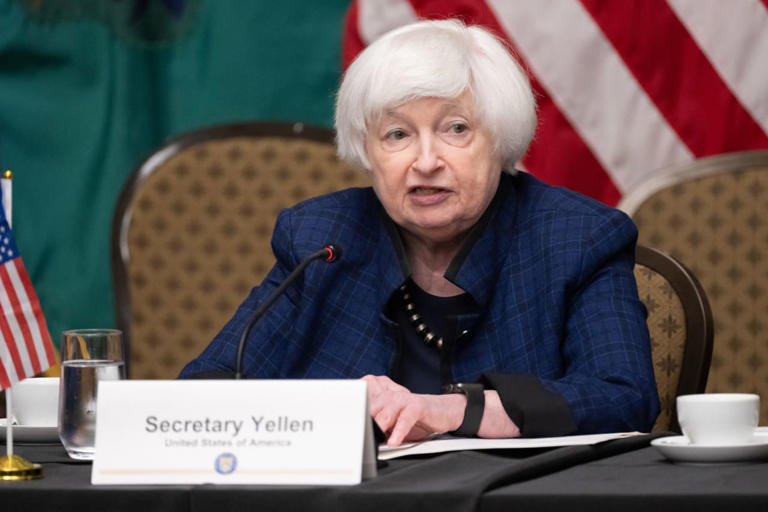Amid diminishing prospects of a Federal Reserve interest-rate reduction, President Joe Biden’s Treasury Department is gearing up to inject liquidity into both the financial markets and the broader economy, strategically timed ahead of the November elections.
Following the substantial influx of tax payments on April 15, Janet Yellen’s Treasury is poised to deploy a portion of these funds into the financial system. Estimates by Wall Street strategists suggest that this injection could amount to as much as $200 billion, a move intended to bolster market liquidity and stimulate economic activity.
The specifics of the government’s borrowing and disbursement plans are slated to be unveiled on May 1, mere hours before the Federal Open Market Committee (FOMC) announces its policy decisions. Given the prevailing expectations of no immediate action on interest rates by the central bank, the Treasury’s forthcoming announcement is anticipated to wield significant influence over market dynamics.
By April 24, the Treasury General Account (TGA) had swelled to nearly $930 billion, substantially exceeding the department’s target of $750 billion. This surplus liquidity is expected to be gradually released into the economy in the lead-up to the elections, serving as a considerable stimulus.
When funds are deposited into the TGA, they are effectively withdrawn from the private sector, resulting in an increase in the Fed’s balance sheet liabilities and a corresponding reduction in banking system reserves. The recent rise in TGA has contributed to higher bond yields, a stronger dollar, and the relative outperformance of value stocks over growth stocks, signaling tighter liquidity conditions.
However, this trend is poised to reverse course as the Treasury begins to release its excess cash into the economy in the coming weeks and months. The Yellen Treasury has demonstrated a keen sensitivity to market conditions in the past, adjusting its financing activities accordingly to influence market dynamics and stimulate economic growth.
Past actions by the Treasury, such as the unexpected increase in note and bond auctions last August, have had significant impacts on bond yields. Similarly, anticipated buybacks of Treasury securities by the Treasury are expected to ease market conditions and stimulate economic activity.
Deutsche Bank estimates that the Treasury will repurchase up to $60 billion in securities maturing in two years or less, while also buying back $30 billion of other less-liquid notes and bonds. Additionally, the Fed is anticipated to announce a reduction in its quantitative tightening (QT) program, further easing liquidity conditions.
These technical adjustments are expected to have a positive impact on financial conditions, providing stimulus to the economy without explicitly altering policy. Despite maintaining a stance of plausible deniability, these measures are likely to bolster market sentiment and economic activity as the country heads into the pivotal November elections.
